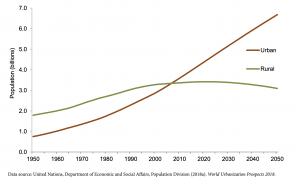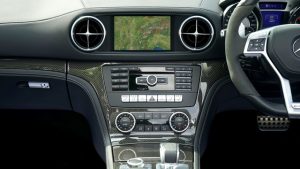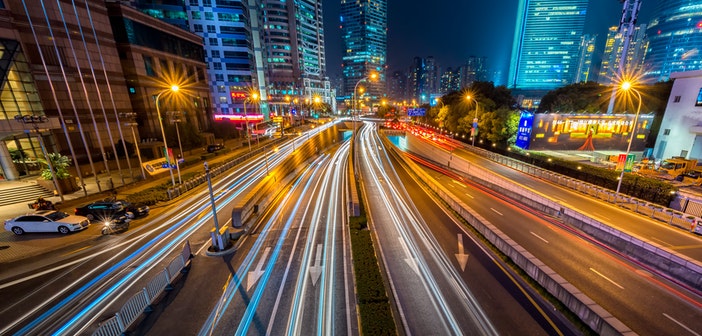In my past blogs I have focused on shared mobility, discussed its future and some of the exciting possibilities that may come in the coming years. We have also looked at some of the trends that are reducing the need for vehicle ownership including urbanisation. This week we tie these trends and possibilities together into the smart city concept and see how smart mobility is helping these futuristic cities become a reality.
So what is a smart city?
We have all heard this term “smart” and own some form of smart technology like phones, watches, televisions, cameras, lightbulbs and the list endlessly continues. Smart cities are much the same as many of these devices, just with them all tied together.
While researching this blog I found a cool definition from technopedia, a smart city is „ one in which sensor-driven data collection and powerful analytics are used to automate and orchestrate a wide range of services in the interests of better performance, lower costs and lessened environmental impact“. Put simply, it’s a city where everything that can have a chip or other sensor connected to it does, so that the city can be as efficient as possible and not overuse its resources.
I think this video gives a better overview of how this could look than I ever could.
https://www.youtube.com/watch?v=Br5aJa6MkBc
Why do we need smart cities?
 Urbanisation is playing a major role in the way we live and is changing our cities quickly. Whenever I dig into the concept of urbanisation, I always come across this graph from the UN. It shows perfectly how the urban environment is changing through the fast growth of people moving to cities. This means that in the early part of this century more people started living in urban areas than rural regions. It also shows that rural populations have plateaued and are now starting to shrink, though this is a blog topic on its own for another day.
Urbanisation is playing a major role in the way we live and is changing our cities quickly. Whenever I dig into the concept of urbanisation, I always come across this graph from the UN. It shows perfectly how the urban environment is changing through the fast growth of people moving to cities. This means that in the early part of this century more people started living in urban areas than rural regions. It also shows that rural populations have plateaued and are now starting to shrink, though this is a blog topic on its own for another day.
With people crowding into cities, these urban areas will need to be incredibly efficient in everything they do so as to not over consume their resources and ensure that their citizens don’t go mad. For example, if you live in a city like London, you can lose more than 60 hours a year stuck in traffic. Or in New York city, the cost to an individual as a result of traffic congestion is close to $3000 per year and costing the city over $33 billion. Can you imagine how much worse this will be as the cities fill up with even more people?
Thankfully, smart technology is here to help make these futuristic cities of efficiency a reality. Some examples of how this tech can help are:
Bins with sensors so the rubbish is only emptied when needed.
Streets are only illuminated when people are using them to save electricity.
Traffic lights knowing when to be green and when to be red based on traffic flow.
However, we are not here to talk about smart technology in general, rather it’s interesting to see how the mobility of today is playing a role in the building of these cities. So here is my list of what’s happening to make this a reality.
Ridesharing
Often ridesharing is touted as a solution to the urbanisation challenge, but much of the operating system for apps like Uber, actually share a lot of the technology required for the smart city concept. For example, the location services which allow drivers to know where you are, to plan their route, and to accept their next passenger is both incredibly efficient for Uber and also exactly what a smart city needs to help manage traffic flows and get people aroung as quickly as possible.
Navigation
 Most people stopped using a satnav when google introduced their live maps and switched to the smart phone app instead. Have you ever been using google maps as a satnav and it changes the arrival time because of traffic, or offers you a “faster route”? This is of course because google is plugged into all the information around you including traffic monitoring sensors and other smart phone users. Imagine if this same technology was plugged into traffic lights, and the overall traffic management system. This would really help to reduce congestion.
Most people stopped using a satnav when google introduced their live maps and switched to the smart phone app instead. Have you ever been using google maps as a satnav and it changes the arrival time because of traffic, or offers you a “faster route”? This is of course because google is plugged into all the information around you including traffic monitoring sensors and other smart phone users. Imagine if this same technology was plugged into traffic lights, and the overall traffic management system. This would really help to reduce congestion.
Parking sensors
Parking apps and sensors are also playing their role. Do you remember when you use to drive into a shopping centre car park and spend ages looking for a park? These days, most park houses use sensors with lights and signs pointing you to where the empty spots are. There are also parking apps now available like Best Parking, Parker, Spot Hero, and ParkMe, which can direct you around a city to free parking places. This technology, is also a part of the smart city concept, of linking people to a smart network that can help them find their way and a park more efficiently.
Smart vehicles
I know that autonomous vehicles is one of my favourite topics, and in this case it’s not so much the autonomy that is important, its actually the vehicles ability to communicate. The point here is, when vehicles can communicate with each other and the traffic sensors, then they can convey information like their route. This will help the traffic flow with traffic light management, predict when parking places will be needed, and also stop collisions. All in all making the vehicles and the roads much more efficient than they are today.
The bottom line
I am not sure how you feel about living in a city that is so connected and observed. Given today’s debate on apps that can track our movements, it is clear that not everyone is comfortable with this. However, those of you already using Uber, or allowing google maps access to your location, or who drive a tesla are already contributing information to the smart city. How comfortable we are with sharing this information, is also a topic for another day.
So when we talk about smart cities, remember that today’s mobility is playing an important role in helping to bring everything together.
These are just my ideas on the mobility trends and ways that the smart city is being built. If you have seen others, and I am sure there are lots, please comment below.
Photos by Mike & Peng LIU from Pexels



